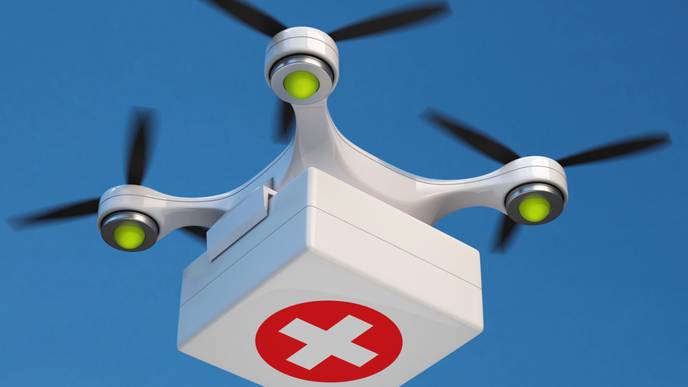ReachMD
Be part of the knowledge.™What the First Lung Delivered by Drone Means for Transplant Science

As organ transplant science advances, its biggest hurdles are increasingly logistical ones—such as securing a flight and navigating through traffic fast enough to deliver an organ before it deteriorates.
Enter the drone, for which researchers recently documented a milestone test in Science Robotics. After hundreds of practice flights, their drone carried a human donor lung on a five-minute journey from the roof of Toronto Western Hospital to Toronto General Hospital for a successful transplant. The trip can take 25 minutes by road.
This study suggests that drone delivery “may have a unique opportunity for organs like hearts and lungs that can tolerate less time on ice,” says Joseph Scalea, a transplant surgeon now at Medical University of South Carolina, who was not involved in the study. In 2019 his team at the University of Maryland made a groundbreaking drone delivery of a kidney—an organ that can survive 24 hours if packed in ice. Lungs and hearts last for less than half that long.
For the new study, Toronto General (which performed the first successful lung transplant in 1983) and Unither Bioelectronics replaced a commercial drone's landing gear with a lightweight carbon-fiber container for the large and fragile organ. The team enhanced the drone's connectivity so radio frequencies wouldn't interfere with its GPS and installed a parachute set to open automatically in case of midair malfunction.
Since the successful test flight, the researchers have been working with aviation authorities to create a drone corridor through commercial airspace—but there are regulatory hurdles. For example, civilians are typically not allowed to fly drones beyond their visual line of sight in densely populated areas.
Shaf Keshavjee, director of Toronto General's lung transplant program, envisions drones someday carrying lungs long distances for specialized repair to make them transplant-ready. For now, though, he's focusing on the journey from airport to hospital—which takes 40 minutes in traffic and just eight by drone—and he anticipates the first such flights as early as this summer. He calls this work “The Last-Mile Model.”
“When the Wright Brothers left Kitty Hawk, they flew only 120 feet the first time,” Keshavjee says. “But now look at where air travel is.”
Facebook Comments